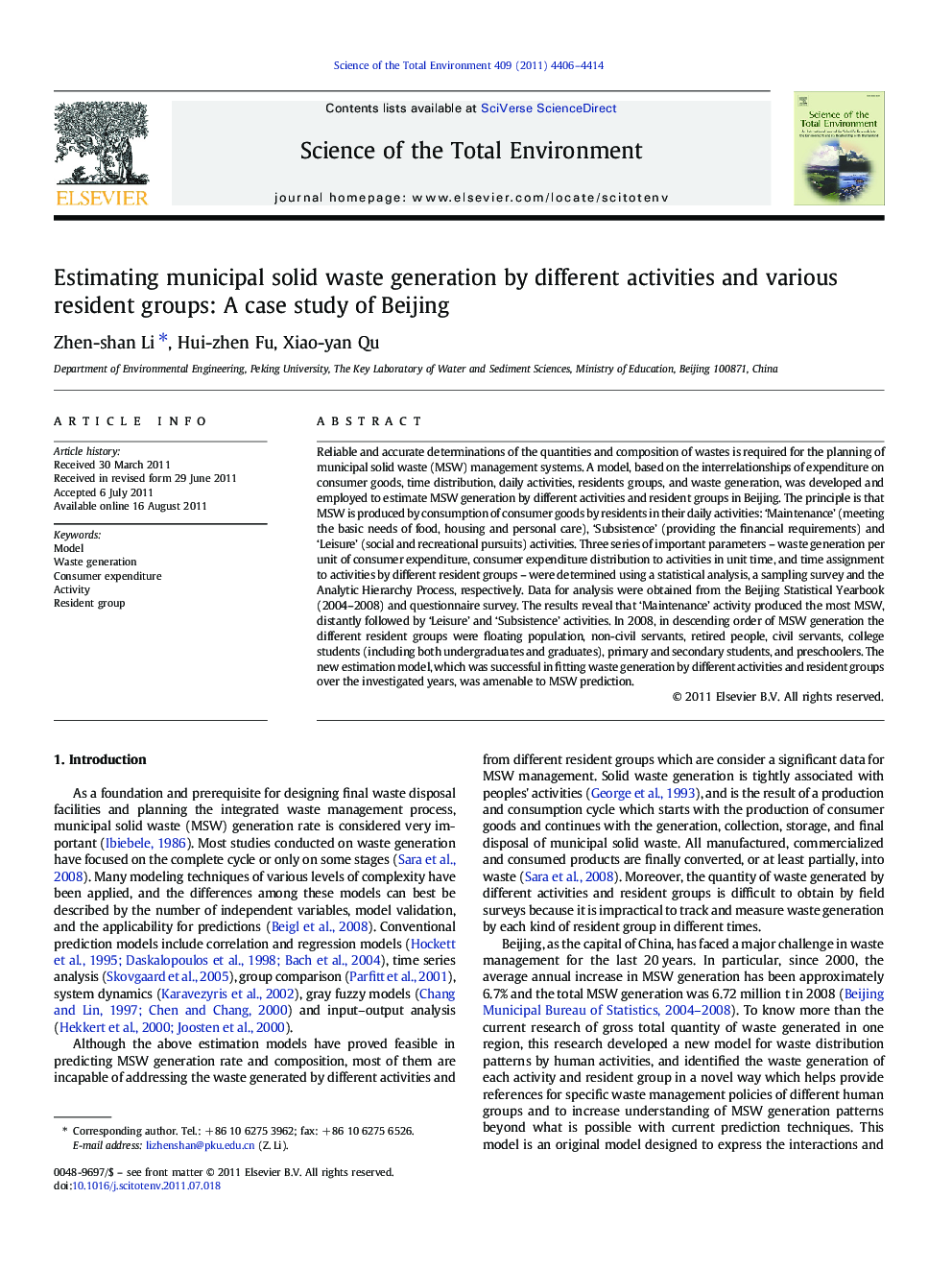| کد مقاله | کد نشریه | سال انتشار | مقاله انگلیسی | نسخه تمام متن |
|---|---|---|---|---|
| 4429932 | 1619842 | 2011 | 9 صفحه PDF | دانلود رایگان |

Reliable and accurate determinations of the quantities and composition of wastes is required for the planning of municipal solid waste (MSW) management systems. A model, based on the interrelationships of expenditure on consumer goods, time distribution, daily activities, residents groups, and waste generation, was developed and employed to estimate MSW generation by different activities and resident groups in Beijing. The principle is that MSW is produced by consumption of consumer goods by residents in their daily activities: ‘Maintenance’ (meeting the basic needs of food, housing and personal care), ‘Subsistence’ (providing the financial requirements) and ‘Leisure’ (social and recreational pursuits) activities. Three series of important parameters – waste generation per unit of consumer expenditure, consumer expenditure distribution to activities in unit time, and time assignment to activities by different resident groups – were determined using a statistical analysis, a sampling survey and the Analytic Hierarchy Process, respectively. Data for analysis were obtained from the Beijing Statistical Yearbook (2004–2008) and questionnaire survey. The results reveal that ‘Maintenance’ activity produced the most MSW, distantly followed by ‘Leisure’ and ‘Subsistence’ activities. In 2008, in descending order of MSW generation the different resident groups were floating population, non-civil servants, retired people, civil servants, college students (including both undergraduates and graduates), primary and secondary students, and preschoolers. The new estimation model, which was successful in fitting waste generation by different activities and resident groups over the investigated years, was amenable to MSW prediction.
► A new model was developed to estimate municipal solid waste generation by different activities and resident groups.
► This model was based on the relations of residents groups, human activities, consumer expenditure, and waste generation.
► The key parameters in the model were obtained by linear regression, analytic hierarch process and questionnaire survey.
► ‘Maintenance’ activity was main waste source, followed by ‘Leisure’ activity and ‘Subsistence’ activity.
► The floating population produced the most waste while preschoolers produced the least in 2008.
Journal: Science of The Total Environment - Volume 409, Issue 20, 15 September 2011, Pages 4406–4414